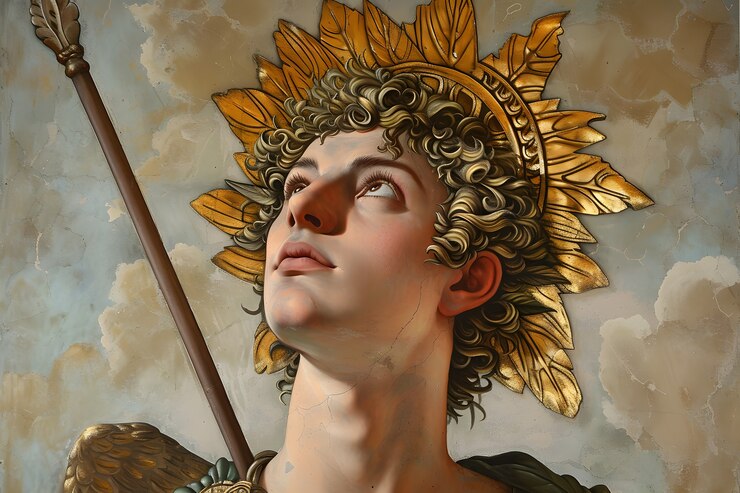Artz
Ancient Artz: The Legacy of Classic Creativity

Ancient Artz. perhaps more than anything else, serves as a time capsule of human culture. Ancient art embodies timeless expressions of creativity, telling stories about civilizations that have long since disappeared. From the intricate frescoes of Ancient Rome to the striking yet serene stone statues of Buddha in Southeast Asia, ancient art continues to captivate and inspire audiences today.
This blog explores the legacy of ancient art. We’ll take a closer look at its significance, the role it played in shaping civilizations, and how its themes and techniques continue to influence modern creativity. Whether you’re an avid connoisseur or simply curious, this deep dive into ancient art is bound to leave you inspired by the enduring power and relevance of creativity throughout history.
What is Ancient Art?
Ancient art refers to creative expressions from early civilizations, typically spanning thousands of years from prehistoric to early medieval times. It includes sculptures, paintings, pottery, carvings, and architecture created before the widespread use of printing. These works were more than mere decoration—they served as tools for storytelling, cultural preservation, and religious or political expression.
Examples of Ancient Art
Some of the most striking examples of ancient art include:
- The Great Pyramids of Giza (Egypt): The ultimate expression of architectural ingenuity, these structures were built as eternal resting places for pharaohs.
- The Parthenon (Greece): A masterpiece of classical architecture, built to honor the goddess Athena.
- Terracotta Army (China): A stunning display of sculptural skill, representing the army of China’s first emperor, Qin Shi Huang.
- Lascaux Cave Paintings (France): Prehistoric cave art that tells stories of Stone Age communities.
These examples barely scratch the surface of humanity’s artistic achievements, yet they highlight how art formed the foundation for culture and history as we know it.
Why Was Ancient Art Created?
The creations of ancient artists weren’t just aesthetic—they had depth and purpose. Art was a way to convey meaning, document beliefs, or evoke emotions. Here are some of the primary reasons ancient civilizations turned to art:
1. Religious Devotion
Many pieces of ancient art were created as offerings for gods or spirits. For instance, the giant stone heads of the Olmec civilization in Mesoamerica are believed to represent deified rulers.
2. Storytelling
Before written language became commonplace, art served as a way to pass down stories, myths, and histories. The intricate carvings on Mayan temples recount tales of rulers, battles, and cosmic phenomena.
3. Cultural Identity
Art was a reflection of a society’s values, norms, and aesthetic ideals. Greek art, for example, emphasized symmetry and balance to reflect the logic and order central to their philosophy.
4. Communication and Power
Rulers and empires often commissioned art to project authority and solidify political control. The towering statues of Pharaoh Ramses II in Egypt’s Abu Simbel stand as a testament to this, showcasing domination and grandeur.
By weaving such meaning into their work, ancient creators left us more than objects—they gave us insight into humanity’s evolving story.
The Evolution of Techniques in Ancient Art
Prehistoric Era
Art began with basic but profound expressions—like the simple handprints and depictions of hunting scenes found in caves. With tools made out of stone or bone, prehistoric artists prioritized utility alongside creativity.
Classical Era
By the time we reach Ancient Greece and Rome, art had advanced into lifelike portrayals of the human form. Sculptors like Phidias and Polykleitos worked to perfect anatomy, capturing the human body in a mixture of idealistic beauty and dynamic realism.
Ancient Asia
At the same time, East Asian civilizations were perfecting their art forms, particularly in calligraphy, intricate ceramics, and meditative sculptures. Much of this work reflected Buddhist principles of mindfulness and spirituality, as can be seen in the serene expressions of Buddha statues.
Advancements in Building Techniques
Let’s not forget how architectural achievements pushed the boundaries of creative potential, laying the foundation—quite literally—for innovative designs. Take the Roman arches and aqueducts, for example. These engineering advancements changed the world by adding both functionality and grandeur to structures.
These techniques not only elevated the standards of art but also left lasting influences on the works of future generations.
Influences of Ancient Art on Modern Creativity
Though thousands of years have passed since ancient artists thrived, their echoes can still be felt. From techniques to thematic inspiration, here’s how ancient art continues to leave its mark:
Architecture
Modern architects often look to ancient structures for inspiration. You’ll see nods to the Greek column styles (Doric, Ionic, and Corinthian) in government buildings, museums, and monuments around the globe.
Film and Literature
Epic tales and mythical themes have transcended art forms to become the backbone of modern narratives. Films like Gladiator or The Prince of Egypt draw heavily on the legacies of ancient civilizations.
Design and Aesthetics
Minimalism, a concept celebrated in today’s art and design movements, can be linked back to ancient Japanese pottery or Greek sculptures, which celebrated simplicity and balance.
Symbolism in Art
Modern artists often borrow symbols from ancient cultures, such as Egyptian ankhs, Greek olive branches, or motifs from indigenous carvings, to embed deeper meaning in their work.
It speaks volumes that, in an era defined by rapid innovation, we still look backward to draw inspiration from the past.
Why Ancient Art Matters Today
Ancient artz does more than please the eye—it reminds us of our shared humanity. By studying ancient creative expressions, we gain insight into the values, struggles, and origins of the civilizations that laid the foundation for contemporary society.
Interconnectedness of Human Creativity
Whether it’s the sacred geometry of Islamic art or the mosaics of Byzantine churches, we see patterns of shared ingenuity. These recurring themes remind us that, while cultures may seem different, they are united by creativity.
A Blueprint for Sustainability
Ancient artz often emphasized long-term durability, such as the Roman use of concrete or Mayan city layouts that respected nature. Today, as we grapple with sustainability, ancient practices can inform our modern approach to creating timeless, impactful works.
Preserving Ancient Art for Future Generations
With time, however, comes the risk of deterioration. Great works of art are constantly threatened by natural elements, urban expansion, and looting. Organizations like UNESCO and private collectors are dedicated to preserving these artifacts, ensuring that future generations can experience their magic.
This preservation goes beyond physical objects—it’s about maintaining the stories and legacy of creativity that continually connects us to our ancestors.
Rediscover the Wonders of Ancient Art
Ancient artz is more than a relic of the past—it’s a legacy that continues to speak to us today. For art enthusiasts, historians, or casual observers, immersing yourself in ancient creativity offers endless inspiration.
Want to stay connected to art and history? Explore more content on AncientArtz.com, where we regularly share insights about the timeless world of classical creativity. Gain a deeper understanding of humanity’s artistic roots—because with art, we build a bridge to the past.
Conclusion:
Ancient artz serves as a powerful reminder of the enduring human spirit and our innate drive to create and express. By exploring the masterpieces of the past, we not only honor the creativity of our ancestors but also find inspiration for the present and future. Whether through studying ancient techniques, appreciating the symbolism, or simply marveling at their beauty, ancient art connects us all to a shared heritage that transcends time. Keep exploring, learning, and cherishing the treasures of history—they are the threads that weave the story of humanity

-

 Technology9 months ago
Technology9 months agoVF1H-1 50MHz | High-Precision Oscillators for Reliable Performance
-

 Tech9 months ago
Tech9 months agoThe Vital-Mag.net Blog: Your Go-To Source for Expert Wellness Tips and Trends
-
Uncategorized10 months ago
Hello world!
-
Entertainment9 months ago
Madelyn Cline Movies And TV Shows
-

 Tech8 months ago
Tech8 months agowww gravityinternetnet | High-Speed Internet Solutions For Connected Living
-

 Tech10 months ago
Tech10 months agoTechdae.frl: Redefining Technology for a Smarter Future
-

 Technology8 months ago
Technology8 months agoExplore Carmenton.xyz | Your Hub for Expert Insights
-

 Technology9 months ago
Technology9 months agoMinghe D6006: A Comprehensive Review